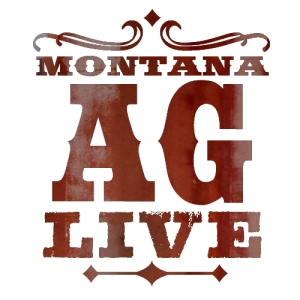 By Brett Crosby, Custom Ag Solutions
By Brett Crosby, Custom Ag Solutions
The USDA’s National Agricultural Statistics Service (NASS) cattle inventory report for January 2015 confirms that beef herd expansion is underway. The number of beef cows that have calved increased over 600,000 head in 2014 to 29.7 million head. The increase in beef cow numbers is the largest since 1994 and the second largest increase in over 30 years. The herd expansion was impressive by any measure, but especially remarkable given the cost of replacement animals and the smaller number of replacement females available compared to 1994, when there were 34.6 million beef cows in the U.S. While increased herd numbers have been expected by many, the new inventory statistics and rapid growth leave many producers wondering what this means for cattle prices going forward.
While a 600,000 head increase is sizeable, the U.S. beef cow herd is still small by historical measures and has decreased by over 3.9 million since 1996. Nearly half of that decrease, 1.7 million head, came in 2012 and 2013 alone, when a drought ravaged the Southwest and forced massive herd liquidations. Even if cattle numbers continue to increase at the 2014 rate, it will take several years just to get the U.S. herd back to the size it was only four years ago. Clearly, total per capita beef supply in the US will remain at historically low levels for several years while the U.S. population continues to grow, resulting in per capita beef supply and beef prices remaining at or near their current levels.
While the current herd expansion suggests that calf prices likely hit their high water mark in the fall of 2014, prices should remain strong in 2015. The 2015 calf crop is likely to be 10 to 15 percent higher than 2014, but calf supplies will likely remain tight while producers retain inordinately large numbers of heifers during this expansion phase. As a result, deferred feeder cattle futures suggest calf prices holding very close to the levels seen last fall. Of course, there is still a long time between now and the fall, and corn prices and winter wheat conditions this fall will play a large part in determining calf prices late in the year.
Feed cost and forage availability aren’t the only sources of uncertainty for this year’s calf prices. Exports have been incredibly strong and a strengthening economy has also supported domestic beef demand. Therefore, a U.S. recession or a global economic slowdown could have a substantial adverse impact on cattle prices. With the U.S. beef herd expanding and a strong dollar and soft oil prices indicating global economic uncertainty, there is more downside risk for cattle prices than upside potential.
With increased downside market risk, this is a good year to consider carefully managing price risk. Forward contracts, futures, options, and RMA’s Livestock Risk Protection (LRP) insurance are all worth considering. If fundamentals hold steady, the calf market is expected to remain strong, so producers should consider a risk management strategy that limits or softens unexpected downside market moves. Also, because a repeat of 2014’s explosive upside move is unlikely, 2015 is probably a good year to consider early forward contracts at current price levels.
Despite national herd expansion, the next several years should remain profitable for cow/calf producers. Beef demand domestically and abroad is strong, and heifer retention that is fueling expansion will help offset the effects of larger calf crops in the coming years. With prices still near historic highs, however, a price risk management strategy should be employed to protect against downside movements triggered by high feed costs or macroeconomic issues. For 2015, the old adage “Nobody ever went broke locking in a profit” is a good one to remember.
Custom Ag Solutions (CAS) is a USDA/RMA education partner that works to promote risk management tools, including Federal crop insurance programs such as the Livestock Risk Protection (LRP) program.
CAS neither sells nor services crop insurance policies. For a list of crop insurance agents, please visit www.USDA.RMA.gov/tools/agent.html. For more information, visit the RMA website at www.USDA.RMA.gov.
 CENTENNIAL, CO — Cow-calf margins will shrink as the U.S. beef cowherd expands, but producers can ensure future profitability by adjusting business plans for the supply increase. An upcoming free CattleFax webinar will address a 2016 outlook for the cow-calf segment and entire beef sector, while exploring continued cowherd expansion.
CENTENNIAL, CO — Cow-calf margins will shrink as the U.S. beef cowherd expands, but producers can ensure future profitability by adjusting business plans for the supply increase. An upcoming free CattleFax webinar will address a 2016 outlook for the cow-calf segment and entire beef sector, while exploring continued cowherd expansion.


 “Current record-high calf prices have occurred (in inflation-adjusted terms) three times since 1920 — in 1951, 1973, and 1979,” says Brester. “In each case, price spikes were caused by a combination of low cattle numbers and unusual market situations. Each of these record-high price events was short-lived — less than two years.”
“Current record-high calf prices have occurred (in inflation-adjusted terms) three times since 1920 — in 1951, 1973, and 1979,” says Brester. “In each case, price spikes were caused by a combination of low cattle numbers and unusual market situations. Each of these record-high price events was short-lived — less than two years.” By Brett Crosby,
By Brett Crosby, 

